Stadio Olimpico: AS Roma / SS Lazio
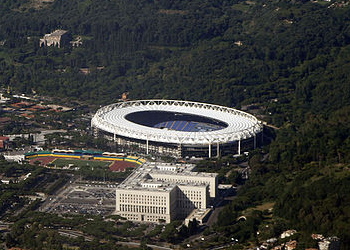
By Doc Searls from Santa Barbara, USA (2011_06_22_orl-cia_241) [CC BY 2.0], via Wikimedia Commons
Stadio Olympico is the largest sports facility in the entirety of Rome. Located inside the Foro Italico complex on the Northern side of the city, the stadium is owned by the Italian National Olympic Committee and is home to two of Italy’s best-known teams. Both SS Lazio and AS Roma play their games there and have done almost since it opened 1937. That opening was a long time coming, too, with ground having been broken for the construction of the stadium as early as 1901.
Whenever we come across grounds that are the home of two different teams we always break up the information into two sections to make it easier for you to understand who we’re talking about. If you want to skip to a specific team then bear in mind that we’ll discuss SS Lazio first and AS Roma second. When we’re talking about things that are true for both teams, such as the stadium history, then we’ll just have one section for clarity. You with us? Buono!
Stats
| Stadio Olimpico Stats | |
|---|---|
| Year Opened | 1937 |
| Capacity | 72698 |
| Average Attendance | 21274 |
| Record Attendance | 100000 (Italy v Hungary (1953)) |
| Pitch Size | 105 x 68 (7140) |
| Nickname | Olimpico |
| Former Name | Stadio dei Cipressi, Stadio dei Centomila |
| Owner | Italian National Olympic Committee |
| Clubs Hosted | S.S. Lazio, A.S. Roma, Italy national football team, Italy national rugby union team |
| First Fixture | Italy v Hungary (17/05/1953) |
| SS Lazio Stats | |
|---|---|
| Year Founded | 1900 |
| Nickname | I Biancocelesti (The White and Sky Blues), I Biancazzurri (The White and Blues), Le Aquile (The Eagles), Gli Aquilotti (The Eaglets) |
| Club Mascot | Eagle |
| Rivals | Roma, Napoli, Livorno |
| Previous Stadiums | Stadio Flaminio |
| Kit | Light Blue & White (Home) / Dark Blue (Away) / Black (Third) |
| Training Ground | Formello Training Ground |
| Shirt Sponsor | Binance |
| Team Owner | Claudio Lotito |
| Record Goalscorer | Silvio Piola (149) |
| Record Appearances | Giuseppe Favalli (401) |
| AS Roma Stats | |
|---|---|
| Year Founded | 1927 |
| Nickname | I Giallorossi (The Yellow and Reds), La Maggica (The Magic One), I Lupi (The Wolves) |
| Club Mascot | Romolo (Wolf) |
| Rivals | Napoli, Inter Milan, AC Milan, Liverpool |
| Previous Stadiums | Stadio Flaminio |
| Kit | Maroon (Home) / White (Away) / Yellow with Black Sash (Third) |
| Training Ground | Trigoria training ground |
| Shirt Sponsor | digitalbits |
| Team Owner | The Friedkin Group |
| Record Goalscorer | Francesco Totti (306) |
| Record Appearances | Francesco Totti (765) |
Stadio Olimpico Photos
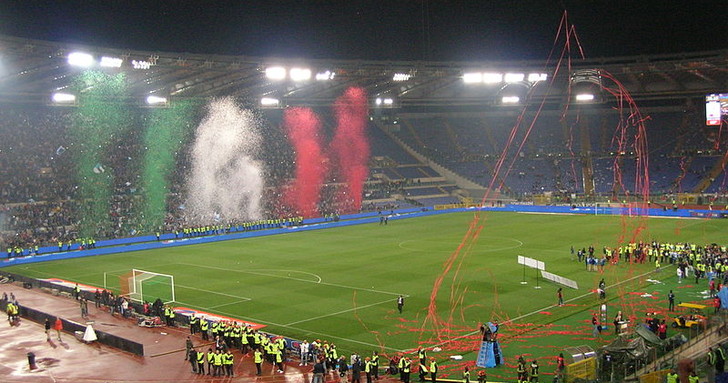
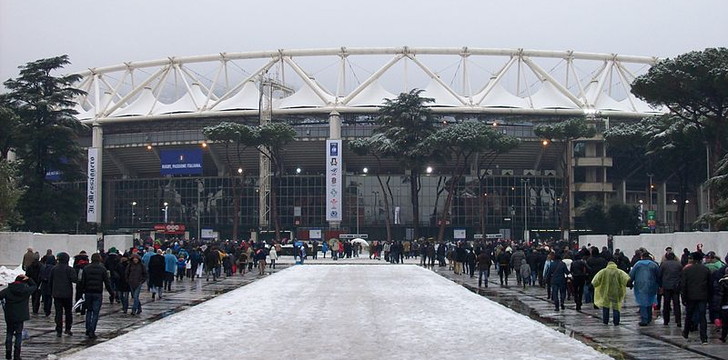
By Blackcat (Own work) [CC BY-SA 3.0]
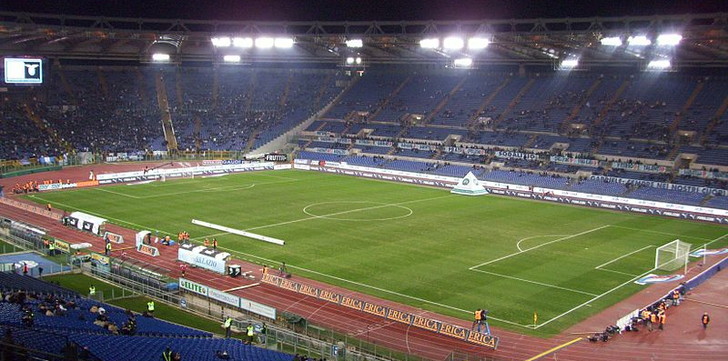
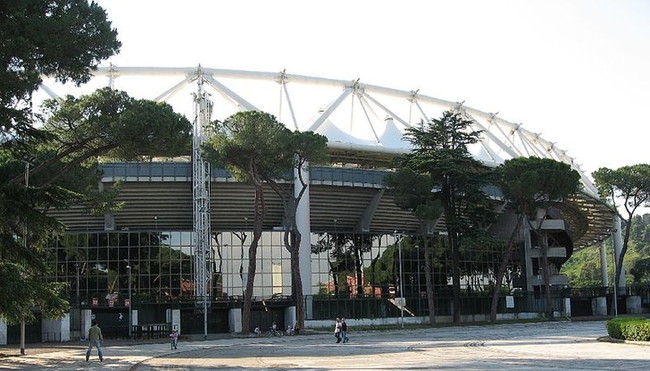
Alen Ištoković [CC BY 3.0]
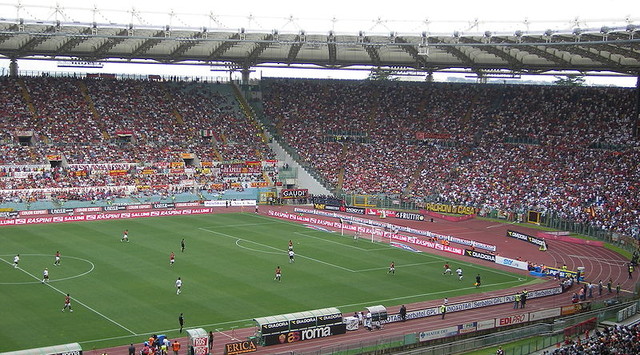
By Gaúcho (Own work) [GFDL
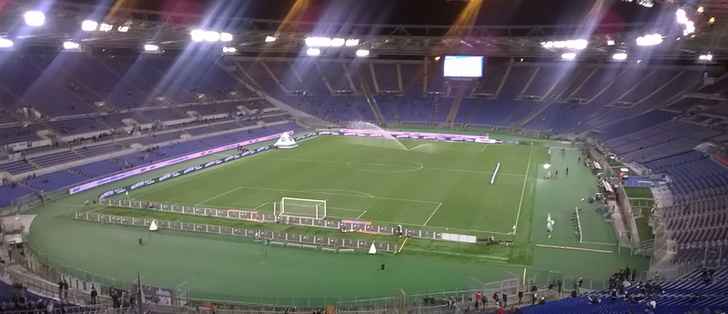
By Nicholas Gemini (Own work) [CC BY-SA 4.0]
Stadio Olimpico Seating Plan and Where to Sit
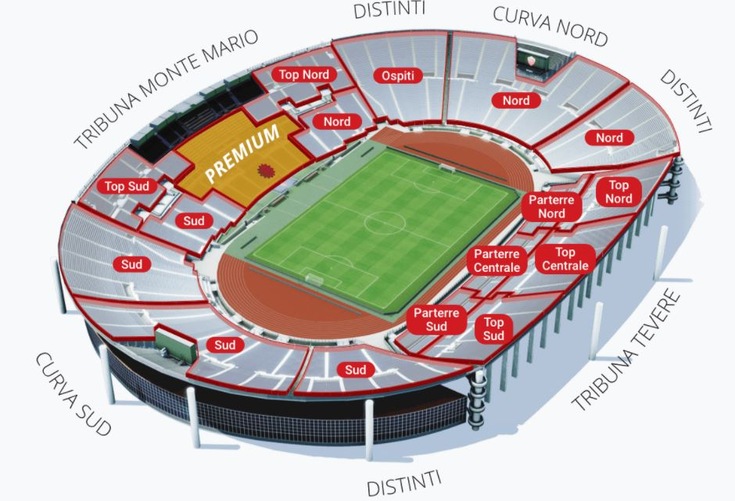
The Stadio Olimpico follows the European Style of having a bowl of continuous seating. That doesn’t mean that it isn’t broken up into sections, however. The two ends, Curva Nord and Curva Sud, are behind the two goals and the Tribuna Tevere and Tribuna Ovest run along the side of the pitch. Here’s a little bit more information on each:
- Curva Nord – This area of the ground tends to be where the most vocal and passionate Lazio fans go during their matches. It is one block of seating with a large screen at the back of it.
- Curva Sud – Much as the Lazio Ultras occupy the Northern end of the ground, so their Roma counterparts call the Southern section home. Expect noise, passion and excitement here.
- Tribuna Ovest – Much like the rest of the stadium, this is a single-tier section of seating. It is commonly considered to be the ground’s Main Stand as it contains the dugouts and director’s box.
- Tribuna Tevere – This stand is what you might refer to as the ‘posh seats’. It’s where journalists watch the matches from and also features a large amount of corporate hospitality seating.
SS Lazio Ticket Prices
Lazio tend to charge different prices depending on who the opposition is that they are up against. As you’d expect, it’s more expensive when they face their rivals such as AC Milan, Inter Milan or, more obviously, their city rivals Roma. Here’s an idea of the sort of prices you can expect to pay depending on the opposition, where in the ground you want to sit and your age:
- Adults: €20 – €200
- Concessions: €14 – €50
- Under 14s: €1
How To Get SS Lazio Tickets
The advancement in technology means that the club’s official website is the best place to start when you’re looking for tickets for matches. There’s also a phone number you can call if your Italian is good enough. If you’re in the city then there are any number of official places you can go to pick up tickets, not least shops such as the Zlazio store near the Termini or the Piazza Mancini.
Where to Buy
AS Roma Ticket Prices
Much like most other European clubs, AS Roma decide what to charge for tickets based on the competition and the opposition they are facing, with bigger matches costing more to attend. There is no set pricing scheme for this but in general you will be looking at €25-€35 behind either goal in the Sud and Nord sections of the ground, while tickets for either Tirbuna (side) will be around €45-€100. You can quite possibly pay slightly less if you are a concession or have young fans coming along.
How To Get AS Roma Tickets
Things are not dissimilar when it comes to AS Roma matches. The internet is the best place to start. The club has a partnership with listicket.com that you can take advantage of. You can also pick them up from sales points located in numerous places including betting shops. There are also official club shops and sales affiliates points that you can go to. If all else fails then simply give the club’s call centre a ring.
Where to Buy
Getting To Stadio Olimpico
Rome is the capital of Italy, so the travel options are numerous and useful. Here are some of the more typical routes that you’ll consider taking:
Train – In order to get to Rome by train you’ll want to depart from London Sr. Pancras and head to Paris’s Gare du Nord station. You’ll then change station to Gare de Lyon in order to get a train to Turin. From Turin you’ll have one train left to get to Rome itself and all in all the journey will take around twenty hours.
Termini, the main station in Rome, is 6km from the stadium and you’ll want to take the Metro A Line to Ottaviano. Alternatively you can get the Metro B Line from Tiburtina station and change at Termini. Station Ostiense will let you do the same thing, incidentally.
Bus – Bus number 32 runs from Ottaviano to the Piazzale della Farnesina. Tram number 2 will also take you close to the stadium.
Car – The stadium is most easily accessible from from Exit Number 5 on the A1 motorway between Florence and Rome. Follow the signs to Foro Italico and you won’t be too far off where you need to be.
By Air – Leonardo da Vinci – Fiumicino Airport is the city’s main one, though it’s still around 40km from the stadium. Ciampino – G.B. Pastine International Airport is closer to the centre of Rome at around 16km, but it’s arguably less convenient than it’s rival.
Taxi – A taxi from Termini to the stadium will cost you just shy of €15 and will take about twenty minutes to complete its journey.
Parking Near Stadio Olimpico
There are a number of private parking areas near to the ground that you can park your car in, should you be driving to the stadium.
Useful Resources
Stadio Olimpico Hotels
As the capital of Italy there are numerous excellent hotels available in Rome. Here are some of our favourites:
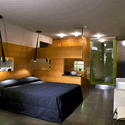
Hotel Zone - £60+
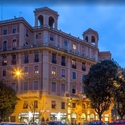
Best Western Hotel Astrid - £55+
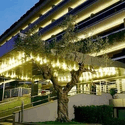
Courtyard Rome Central Park - £80+
Pubs and Bars Near Stadio Olimpico
Rome is not without its watering holes, as you’d expect from a country’s capital city. There are any number of pubs in the area around the Ponte Milvio bridge, though we’d recommend you opt to drink in the city centre before heading out to the ground. Here are some of the best places:
Abbey Theatre Irish Pub
The Highlander Pub
Harry's Bar
Facilities
The Stadio Olimpico is nearly one hundred years old but it has been refurbished on a number of occasions. That means it’s not the most modern and luxurious ground in all of Italy but it isn’t coming apart at the seams, either. Views are good from most places around the stadium and you’ll be able to get yourself a bite to eat or a drink in the build-up to kick-off and at half-time. What more do you want?
Hospitality
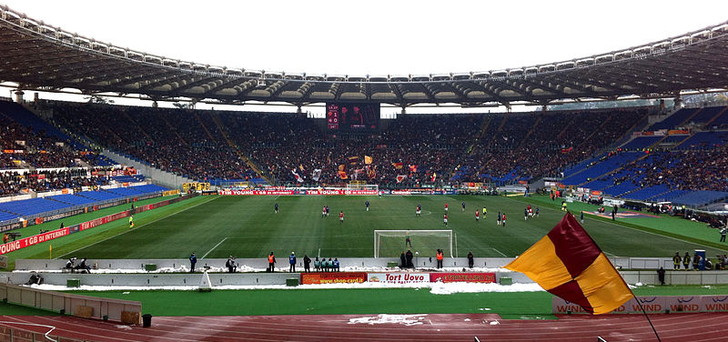
SS Lazio
There are a number of hospitality packages at the Stadio Olimpico that you can take advantage of when you go to see a Lazio match. Perhaps the Stage Lazio might interest you? This is arguably the most prestigious hospitality on offer, with armchair seats, flat screen TVs to show you the action, access to a minibar and also excellent service.
Maybe you’re more of a relaxed fan who wants to take advantage of hospitality without having to buy a full box package. If so then the Super Palco Lazio might appeal. This is for private football fans as well as business people who want to entertain clients at the match. It’s similar to the Honourable Grandstand Lazio package, except for the fact that with the latter you are on seats in the stadium itself rather than in a corporate area.
AS Roma
All of Roma’s hospitality packages offer the sort of stunning dining that you’d expect from a top-class club in Italy. There are full course dinners, food counters with all sorts of varieties of grub to enjoy, cocktail bars and even a sommelier to help you pick the wine that will go best with what you’re eating.
Tribuna 1927 is the club’s main VIP section. You even get to watch the players warm-up in the tunnel if you opt for this package. This is for serious business people who want to mix with club executives and players from the club’s history. Skyboxes offer an alternative that allows you and your guests to get the most out of you’re day, whilst time in the Tribuna D’Onore sees you experience the very best Roma has to offer by way of luxury and comfort.
Private Hire
The facilities at Stadio Olimpico aren’t for the exclusive use of football fans, with conference and event hire being possible depending on what you’re hoping to do. If this is something that you fancy and your Italian is good enough to mean you can make yourself understood then get in touch with the stadium directly or the Italian Olympic Committee and they’ll be able to help you with what you need.
Stadium Tours & Museum
Somewhat remarkably for a stadium of the size and stature of the Stadio Olimpico, no tours are offered to the general public. That may change at some point in the future of course, when someone involved with either club realises it’s ludicrous. If it does we’ll let you know. That said, it’s pretty easy to get a ticket to either club’s games, so if you’re in Rome buy yourself a ticket and have a good look around the place.
Rome is full of museums, yet none of them are exclusively dedicated to either AS Roma or SS Lazio. Interestingly, Roma were in the process of building a new stadium which called Stadio della Roma, and one of the things it would have had is a museum about the club’s history. However, in Feb 2021 it was announced that the project had been halted with no ground broken, so whether or not this will ever happen is now anyone’s guess.
About SS Lazio
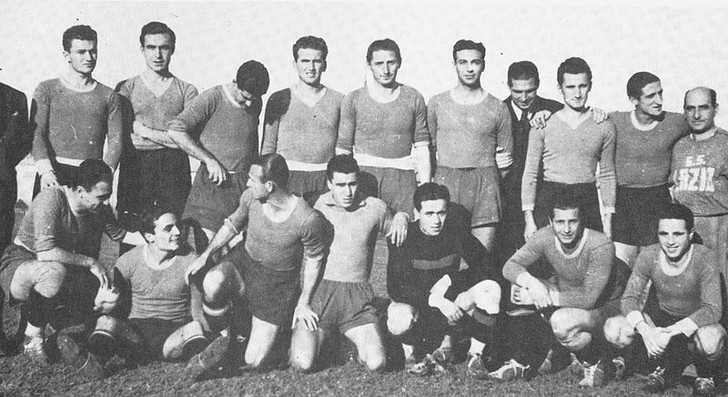
Founded in 1900, the club has spent the vast majority of its existence in Italy’s top-flight. They have been crowned champions of Italy on two occasions at the time of writing, also winning the Coppa Italia six times and the Supercoppa Italiana three times. They have also achieved some international success, picking up both the UEFA Super Cup and the UEFA Cup Winners’ Cup.
Their first major success didn’t come until 1958 when they won a domestic cup. Their first title came a full sixteen years later when they were crowned Italian champions. The SS in Lazio’s title stands for Società Sportiva and is commonly left out when people discuss the club, referring to it merely as Lazio. The reason they are called a Società Sportiva is that the football club is part of a larger sports club that takes part in around forty different disciplines – more than any other similar sports club in the world.
About AS Roma
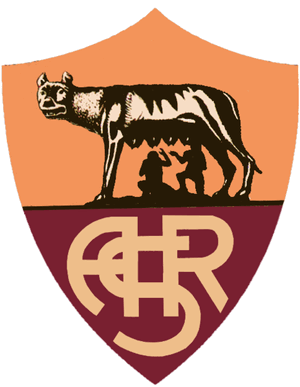
Associazione Sportiva Roma, which means Rome Sport Association, is better known simply as Roma. The club was founded in 1927 when three old Italian clubs, Roman FC, SS Alba-Audace and Fortitudo-Pro Roma SGS, were merged together by Italo Foschi. He created the club in order to give the county’s capital a strong team to represent it, with Lazio still to make any real impression on the football world. At the time of writing the club has spent just one season outside of the Italian top-flight; the 1951-1952 season.
Roma have won the league just one more time than their city rivals, picking up the title on three separate occasions. They’ve won one less Supercoppa Italiana trophies, too, but they’ve won the Coppa Italia nine different times. In Europe they came incredibly close to winning the European Cup in 1984 but were beaten by Liverpool in the final. They also lost out in the final of the UEFA Cup in 1991 when Internazionale beat them over two legs. They did win the Inter-Cities Fairs Cup in 1961, however.
Stadio Olimpico History
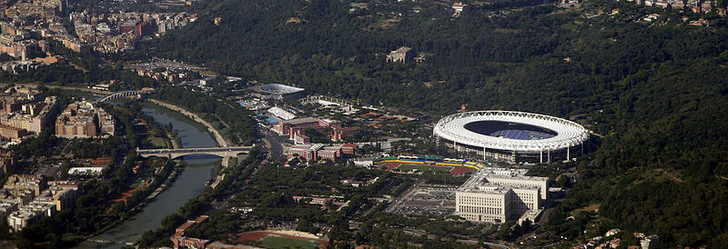
The Stadio Olimpico was originally known as the Stadio dei Cipressi when it was first opened, being part of the Foro Mussolini. This was re-named the Foro Italico when the war came to and end and Mussolini was removed from power. Though the ground for the stadium was broken into in 1901 construction work didn’t actually begin until 1927. In 1937 further works were started but paused when war broke out. When it re-opened in 1950 it had a capacity of around 100,000 so it became known as the Stadio dei Centomila. It kept that name until it was re-christened as the Stadio Olimpico when it hosted the 1960 Olympic Games.
The entire ground was practically re-built in preparation for it to be the main stadium hosting matches for the 1990 FIFA World Cup. During the 1989-1990 season both SS Lazio and AS Roma played their matches in the Stadio Flaminio as the ground underwent its changes. It hosted five games including the competition’s final between West Germany and Argentina, which the Germans won 1-0. Six years later the stadium hosted the Champions League final between Juventus and Ajax. It also hosted the competition’s final in 2009, though the ground underwent significant change in order to meet UEFA’s requirements to do so.
Future Developments
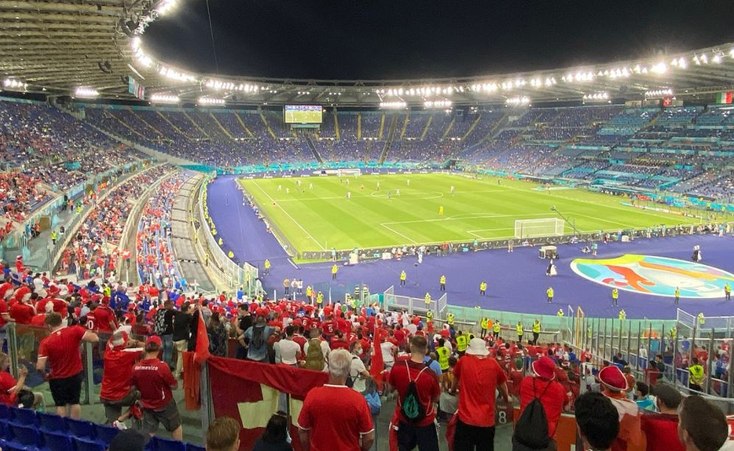
The Stadio Olimpico was one of the venues for the 2020 European Championships, and was spruced up in the build-up to that tournament. Essentially, it had it’s technological capabilities updated and was given a lick of paint, the equivalent of buying a new TV and sound system and wallpapering your living room. There are no plans in the immediate future to do anything further.
